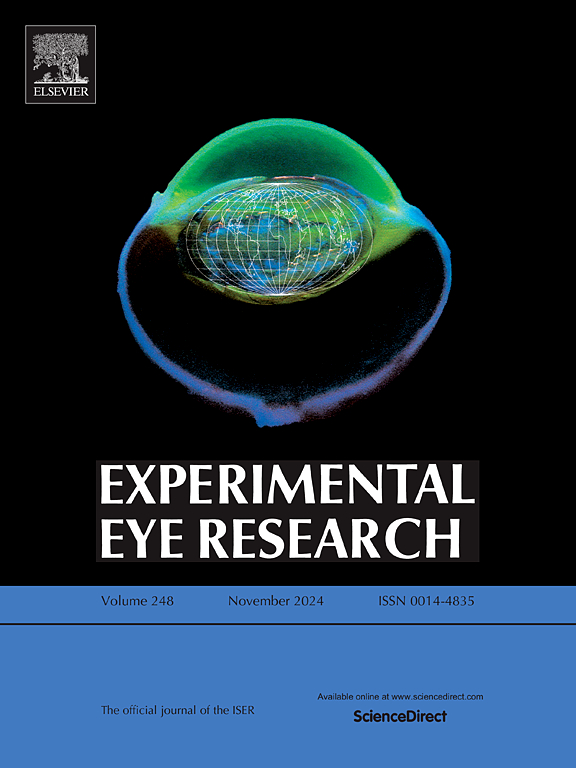Progress in single-cell sequencing of retinal vein occlusion or ischemic hypoxic retinopathy
IF 3
2区 医学
Q1 OPHTHALMOLOGY
引用次数: 0
Abstract
Retinal vein occlusion (RVO) and ischemic hypoxic retinopathy (IHR) are leading cause of irreversible vision loss worldwide, compelled by complex microvascular dysfunction, neuroinflammation, and tissue hypoxia. Despite advances in imaging and treatment, a comprehensive understanding of cellular and molecular heterogeneity underlying these pathologies remains limited. Recently, single-cell RNA sequencing (scRNA-seq) has emerged as a transformative technology, enabling unprecedented resolution of cellular dynamics, transcriptomic landscapes, and intracellular communication within the retina. Single-cell technologies continue to evolve, they are poised to revolutionize our understanding of retinal vascular diseases, ultimately paving the way for precision diagnostics and targeted interventions. This technique has revolutionized our understanding regarding complex biological systems and enables proper analysis of cellular heterogeneity. This review highlights the recent progress for the application SCS to dissect the pathophysiology of RVO and IHR. Moreover, current study summarizes findings on altered gene expression endothelial cells, Muller glia, micro glia and photoreceptors under ischemic and hypoxic stress, shedding light on potential therapeutic targets and biomarkers. Furthermore, this study explores the integration of snRNA-seq, spatial transcriptomics, and multi-omics approaches to enhance the spatial and temporal mapping of retinal responses. Additionally, discuss the current challenges, including sample preservation, retinal cell-type annotation, and cross-species translation, while offering insights into future directions such as personalized medicine and regenerative strategies. This paper aims to provide clinicians and researchers with a comprehensive update on the rapidly expanding frontier of single-cell analysis in retinal ischemic diseases.
视网膜静脉闭塞或缺血性缺氧视网膜病变单细胞测序研究进展
视网膜静脉闭塞(RVO)和缺血性缺氧性视网膜病变(IHR)是世界范围内不可逆视力丧失的主要原因,由复杂的微血管功能障碍、神经炎症和组织缺氧所引起。尽管在成像和治疗方面取得了进步,但对这些病理背后的细胞和分子异质性的全面了解仍然有限。最近,单细胞RNA测序(scRNA-seq)作为一种变革性技术出现,使细胞动力学、转录组学景观和视网膜内细胞内通信的分辨率前所未有。单细胞技术不断发展,它们将彻底改变我们对视网膜血管疾病的理解,最终为精确诊断和有针对性的干预铺平道路。这项技术彻底改变了我们对复杂生物系统的理解,并使细胞异质性的正确分析成为可能。本文综述了应用SCS解剖RVO和IHR的病理生理的最新进展。此外,本研究总结了缺血和缺氧应激下内皮细胞、Muller胶质细胞、小胶质细胞和光感受器基因表达的改变,揭示了潜在的治疗靶点和生物标志物。此外,本研究还探索了snRNA-seq、空间转录组学和多组学方法的整合,以增强视网膜反应的时空定位。此外,讨论当前的挑战,包括样本保存,视网膜细胞类型注释和跨物种翻译,同时提供对个性化医疗和再生策略等未来方向的见解。本文旨在为临床医生和研究人员提供有关视网膜缺血性疾病单细胞分析快速发展前沿的全面更新。
本文章由计算机程序翻译,如有差异,请以英文原文为准。
求助全文
约1分钟内获得全文
求助全文
来源期刊

Experimental eye research
医学-眼科学
CiteScore
6.80
自引率
5.90%
发文量
323
审稿时长
66 days
期刊介绍:
The primary goal of Experimental Eye Research is to publish original research papers on all aspects of experimental biology of the eye and ocular tissues that seek to define the mechanisms of normal function and/or disease. Studies of ocular tissues that encompass the disciplines of cell biology, developmental biology, genetics, molecular biology, physiology, biochemistry, biophysics, immunology or microbiology are most welcomed. Manuscripts that are purely clinical or in a surgical area of ophthalmology are not appropriate for submission to Experimental Eye Research and if received will be returned without review.
 求助内容:
求助内容: 应助结果提醒方式:
应助结果提醒方式:


